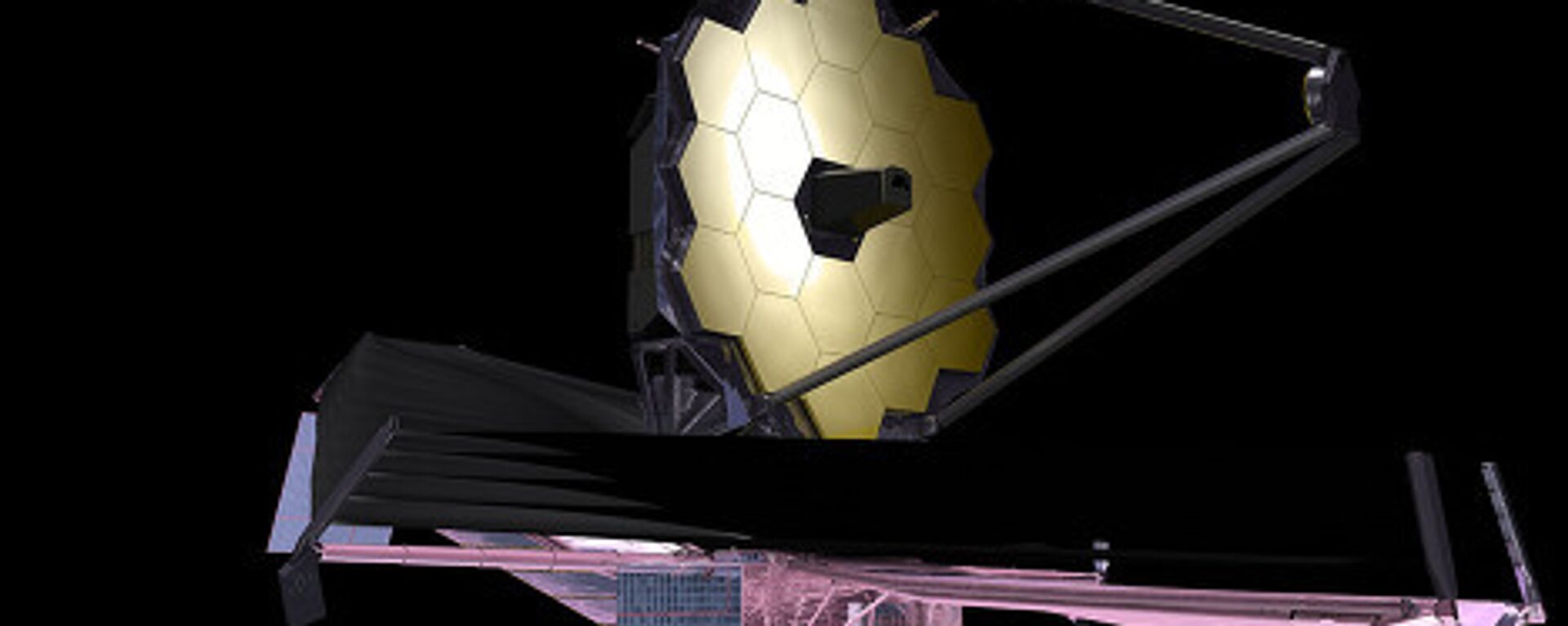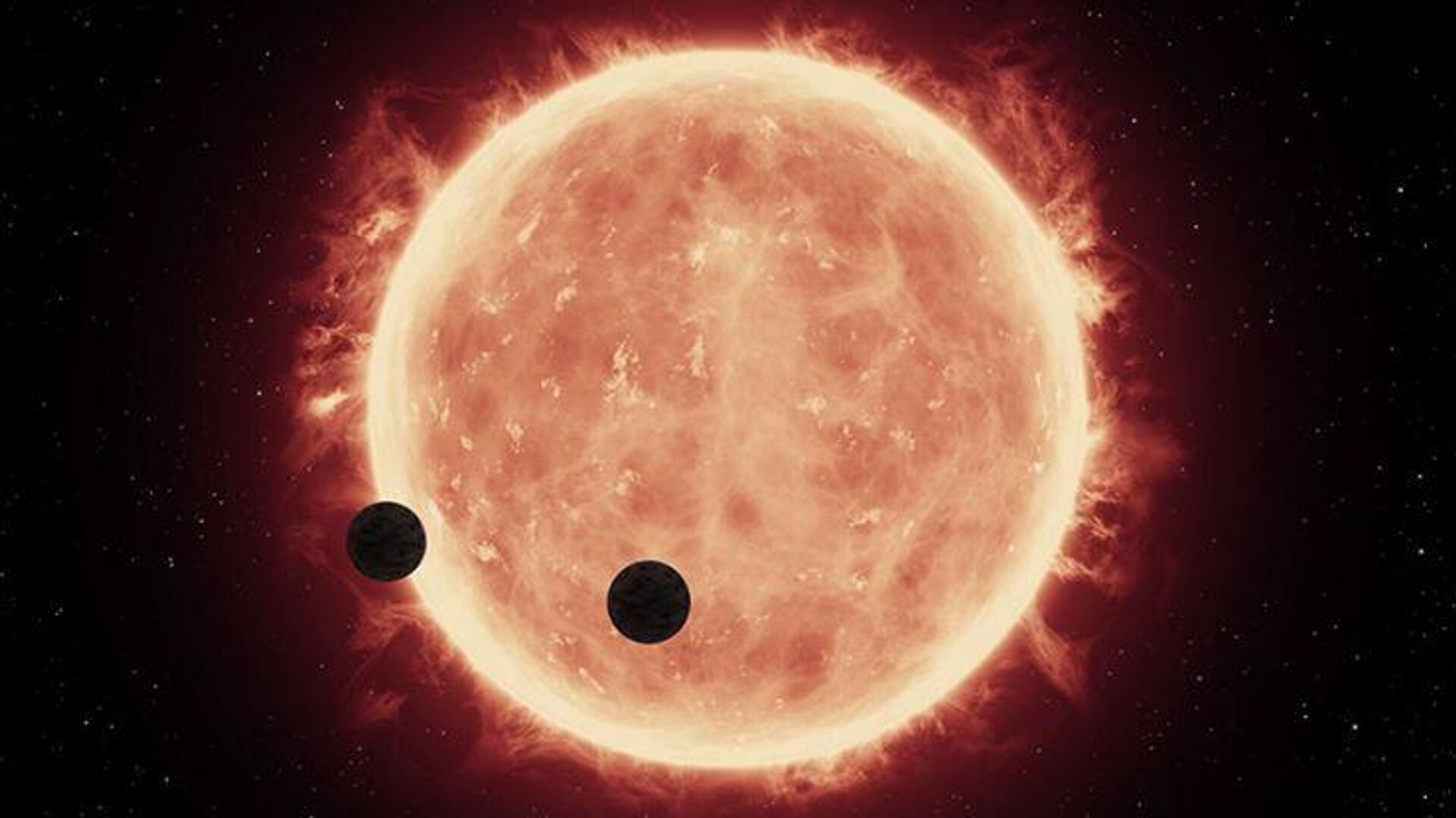https://sputnikglobe.com/20220909/scientists-discover-two-super-earths-one-potentially-habitable-1100596523.html
Scientists Discover Two Super-Earths, One Potentially Habitable
Scientists Discover Two Super-Earths, One Potentially Habitable
Sputnik International
An international research team has announced the discovery of two new "super-Earth" exoplanets orbiting LP890-9, a small red dwarf located about 100 light... 09.09.2022, Sputnik International
2022-09-09T14:18+0000
2022-09-09T14:18+0000
2023-04-12T16:58+0000
nasa
exoplanet
science & tech
space
https://cdn1.img.sputnikglobe.com/img/07e6/09/09/1100595207_144:0:882:415_1920x0_80_0_0_74aabcebc348ef80156ce7804017ff6e.jpg
The inner planet of the system, named LP890-9b, is about 30 percent larger than Earth and orbits the star in just 2.7 days. This first planet was initially identified as a possible planet candidate by NASA's TESS exoplanet-hunting telescope.The observations of LP 890-9b made by SPECULOOS proved fruitful, as they not only confirmed the presence of the first planet, but also played a crucial role in the discovery of the second, previously unknown planet. This second planet, LP 890-9c, is similar in size to the first (about 40 percent larger than Earth), but has a longer orbital period - about 8.5 days. At its orbital position, the exoplanet sits within its star's conservative habitable zone, receiving stellar radiation levels similar to Earth. The telescopes of the SPECULOOS project installed at the Paranal Observatory of the European Southern Observatory in the Atacama Desert in Chile, and on the island of Tenerife, are optimized for high-precision observation of these types of stars thanks to cameras that are very sensitive in the near infrared range.Earlier, NASA reported that a space telescope named after James Webb photographed its first exoplanet. According to scientists, this achievement was "a historic moment for astronomy".
https://sputnikglobe.com/20220826/webb-telescope-detects-carbon-dioxide-in-giant-exoplanet-700-light-years-away---nasa-1100006539.html
Sputnik International
feedback@sputniknews.com
+74956456601
MIA „Rossiya Segodnya“
2022
Sputnik International
feedback@sputniknews.com
+74956456601
MIA „Rossiya Segodnya“
News
en_EN
Sputnik International
feedback@sputniknews.com
+74956456601
MIA „Rossiya Segodnya“
Sputnik International
feedback@sputniknews.com
+74956456601
MIA „Rossiya Segodnya“
nasa, exoplanet, science & tech, space
nasa, exoplanet, science & tech, space
Scientists Discover Two Super-Earths, One Potentially Habitable
14:18 GMT 09.09.2022 (Updated: 16:58 GMT 12.04.2023) An international research team has announced the discovery of two new "super-Earth" exoplanets orbiting LP890-9, a small red dwarf located about 100 light years from Earth.
The inner planet of the system, named LP890-9b, is about 30 percent larger than Earth and orbits the star in just 2.7 days. This first planet was initially identified as a possible planet candidate by NASA's TESS exoplanet-hunting telescope.
"It is important to detect as many temperate terrestrial worlds as possible to study the diversity of exoplanet climates, and eventually to be in a position to measure how frequently biology has emerged in the cosmos," Amaury Triaud, a professor of exoplanetology at the University of Birmingham, said in a statement.
The observations of LP 890-9b made by SPECULOOS proved fruitful, as they not only confirmed the presence of the first planet, but also played a crucial role in the discovery of the second, previously unknown planet.
This second planet, LP 890-9c, is similar in size to the first (about 40 percent larger than Earth), but has a longer orbital period - about 8.5 days. At its orbital position, the exoplanet sits within its star's conservative habitable zone, receiving stellar radiation levels similar to Earth.

26 August 2022, 00:11 GMT
The telescopes of the SPECULOOS project installed at the Paranal Observatory of the European Southern Observatory in the Atacama Desert in Chile, and on the island of Tenerife, are optimized for high-precision observation of these types of stars thanks to cameras that are very sensitive in the near infrared range.
Earlier, NASA reported that a space telescope named after James Webb photographed its first exoplanet. According to scientists, this achievement was "a historic moment for astronomy".


